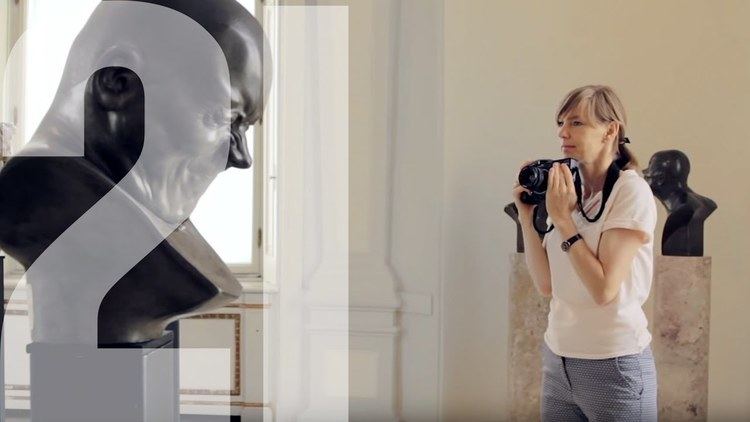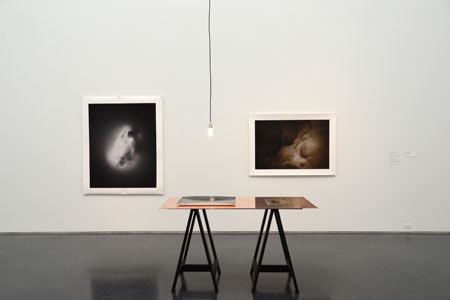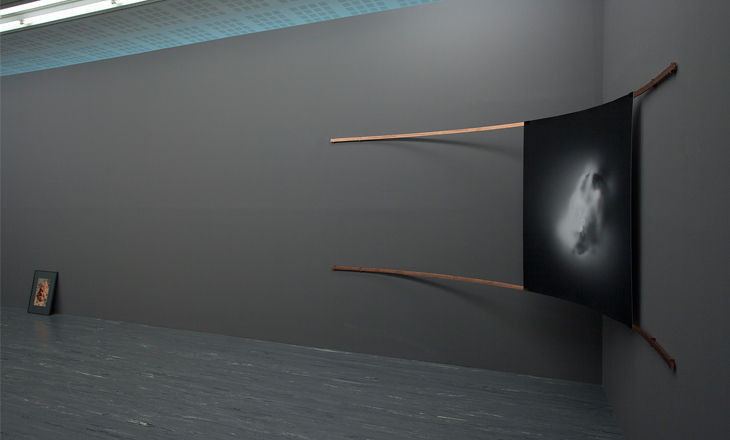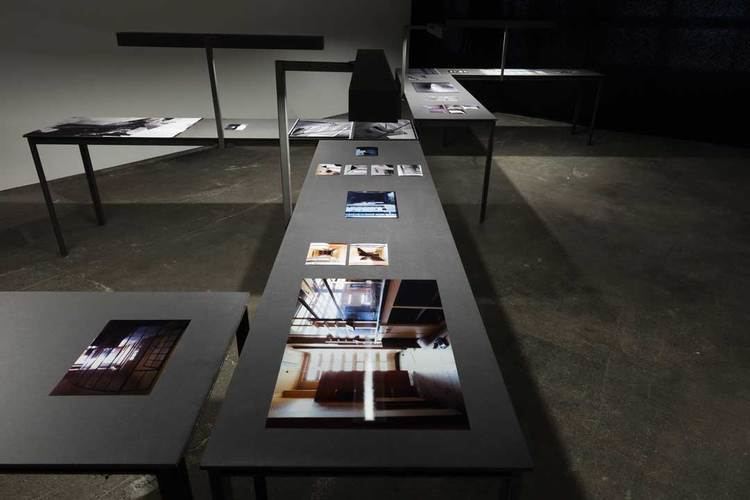Name Susanne Kriemann | ||
 | ||
Books Reading Susanne Kriemann, Not quite replica : meteorite | ||
Artists talk 3 susanne kriemann
Susanne Kriemann (born 1972 in Erlangen) is a German artist and university professor who investigates the medium of photography in the context of social history and archival practice. Her work has been shown in numerous venues, including the Fotomuseum Winterthur, the Berlinische Galerie and the Museum of Contemporary Art, Chicago.
Contents
- Artists talk 3 susanne kriemann
- SUSANNE KRIEMANN
- Life and work
- Exhibitions selection
- Grants and awards
- Publications selection
- Links
- References

SUSANNE KRIEMANN
Life and work

After completing her studies at the State Academy of Fine Arts in Stuttgart in 1997, where she studied under Joseph Kosuth and Joan Jonas, Kriemann enrolled in the Programme de recherche at the École nationale supérieure des Beaux-Arts in Paris in 2000. She has taken part in various artist residency programs, including in Moscow, Stockholm, Cairo, and Vienna. Together with Aleksander Komarov, she is one of the cofounders of the artist-run initiative AIR Berlin Alexanderplatz. She is represented by the galleries Wilfried Lentz and RaebervonStenglin (2009–16).

Kriemann’s artistic practice is notable for the expansiveness of its conception of photography. Her work examines the act of documentation as a photographic principle with regard to temporality and material processuality in specific sociohistorical contexts. Her methods range from archival research to field studies to the use of various photographic imaging and printing processes.

Pechblende, an ongoing project begun in 2014, deals with the extraction of pitchblende (uraninite) for uranium production by the Wismut mining company in the Ore Mountains in the former East Germany between 1946 and 1991. These activities contributed significantly to the Soviet Union’s nuclear arsenal. The radiation emitted by pitchblende exposes photosensitive paper when placed in direct contact with it. Kriemann has taken advantage of this quality to create a series of autoradiographs in which the mineral itself becomes a kind of “camera.”

A spin-off from that project is Falsche Kamille, Wilde Möhre, Bitterkraut (2016). The title lists three plants (false chamomile, wild carrot, ox tongue) that can be found growing in the area mined by Wismut, which is designated as contaminated for the next 100,000 years. From these plants, Kriemann made both photograms (Cycle 1) and heliogravures (Cycle 2). For Cycle 1, she dried plants, made photograms of them in the darkroom using the flash from her smartphone, and then ground them to make pigments. These were used to print color blocks behind lists of the substances found in each plant, including several – gadolinium, uranium, aluminum, copper, nickel, and zinc – that are used in manufacturing smartphones, camera lenses, and LEDs. For Cycle 2, she photographed plants in situ and then made heliogravure prints using the pigments obtained from them. The subject of the image and the material from which it is made are thus one and the same.

A similar principle is at work in Duskdust (2014–16). Here, rocks from a former limestone mine on the Furillen peninsula, on the Swedish island of Gotland, were ground into dust, which was then incorporated into a series of silk-screen prints, so that the material becomes the ground of the image.

Ray (2013) marked a new stage of Kriemann’s investigation of the world as an analogue to photography, a “recording system” for human-caused ecological processes. Ray dealt with radioactive rare-earth elements, which today are essential for the production of smartphones and LEDs. These were extensively studied in the late 1880s at the Barringer Hill mine in Llano, Texas, which now lies beneath Lake Buchanan. During a 2013 research trip Kriemann explored the lake, on whose bottom the ores now rest, to assess its photographic suitability as a light-refracting optical lens for the mine below.

Whereas the Texas mine was approached from the perspective of a material archaeology of ecological, economic, political, and chemical processes, Ashes and Broken Brickwork of a Logical Theory (2009–10) dealt with actual archaeology. Here, Kriemann juxtaposed her own photographs and aerial images of the Syrian desert and excavation sites in Mesopotamia with pictures from the photographic archive of the writer Agatha Christie. As a photographer for the British Museum, Christie accompanied archaeological expeditions to northern Iraq in 1928 and Syria in 1930 – trips that provided inspiration for novels such as Murder on the Orient Express. The archaeologists of that era were no longer interested simply in making spectacular finds, but also in classifying fragmentary artifacts and assembling them into a coherent picture of the past. However, this was also a period of violent anticolonial uprisings in the region, which sometimes ended in bloodshed. Through this combination of historical images and her own photographs, which has been published in an artist’s book and shown in three exhibitions, at KIOSK in Ghent, the Künstlerhaus Stuttgart, and the Berlinische Galerie, Kriemann placed historical documents in a new order and reflected on the construction of history in connection with colonial power over historiography.
One Time One Million (2006–09) began with a 1942 Hasselblad Ross HK7 camera, which Kriemann purchased at auction, together with a supply of 1940s-vintage film, while doing research in Sweden. The HK7 model was designed for the Swedish Army by Victor Hasselblad in 1940, based on a German aerial-surveillance camera. Kriemann used the antique camera and film to take aerial photographs of Tensta and Rinkeby, two residential districts on the outskirts of Stockholm. In response to a housing shortage, Sweden’s “Million Program” created homes for a million people between 1964 and 1974; today the country is a global migration destination. In an installation and an artist’s book published by Roma Publications, Kriemann juxtaposed her aerial images with ornithological photographs by Hasselblad from the archive of the Hasselblad Foundation, and with pictures taken from military aircraft from the Swedish Military Archives.
The title of the installation and artist’s book 12 650 000 (2005–08) refers to the weight, in kilograms, of the “Schwerbelastungskörper” (heavy load–bearing body) in Berlin, which was built in 1941–42 in the context of Albert Speer’s remodeling of Berlin and served as a test structure for a gigantic triumphal arch envisioned as the southern gateway to Adolf Hitler’s planned "Welthauptstadt Germania" ("World Capital Germania"). Kriemann counters the massiveness of this historical document with written and photographic press coverage, dating as far back as 1950, that attempts – with sometimes divergent results – to comprehend the physical existence of the Schwerbelastungskörper.
Kriemann’s method of incorporating archival material into her work, and of examining the technological factors underlying the production of photography, originates in a questioning of who is the initiator of photographs and what historical conditions they are created under. Her approach to photography thus has less to do with representation than with an interest in photography as a technological tool for the formation of history.
Besides having shown internationally in cities including Basel, Toronto, Shanghai, Vienna, Vancouver, Paris, and Rotterdam, Kriemann has also created sixteen artist’s books as multiples since 1998. An integral part of Kriemann’s work, these books are created in close collaboration with designers and authors. As a site-independent, accessible archive, they convert the work into a different format, described by the artist as a “camera obscura,” whose pages are “exposed” when the books are opened and perused.
In 2017, Susanne Kriemann joined the faculty of the Karlsruhe University of Arts and Design as a professor of fine-art photography. The artist lives and works in Berlin and Karlsruhe.
